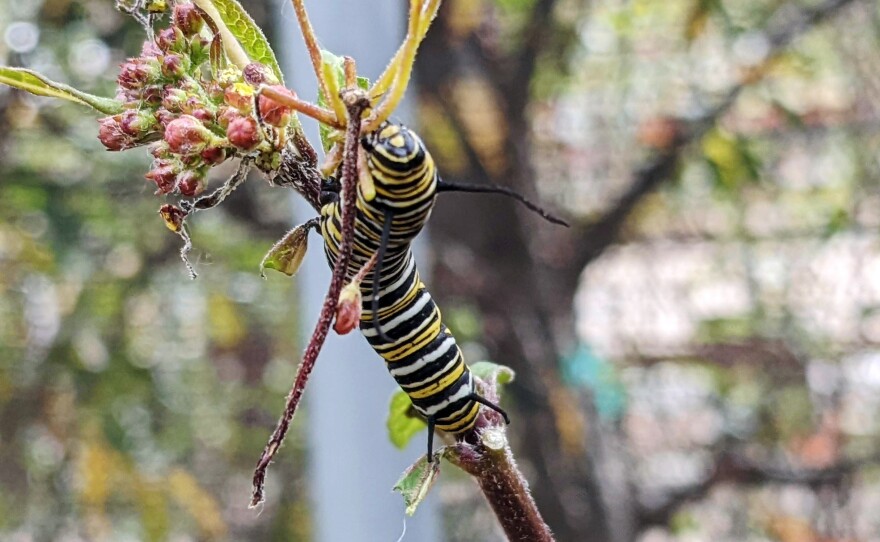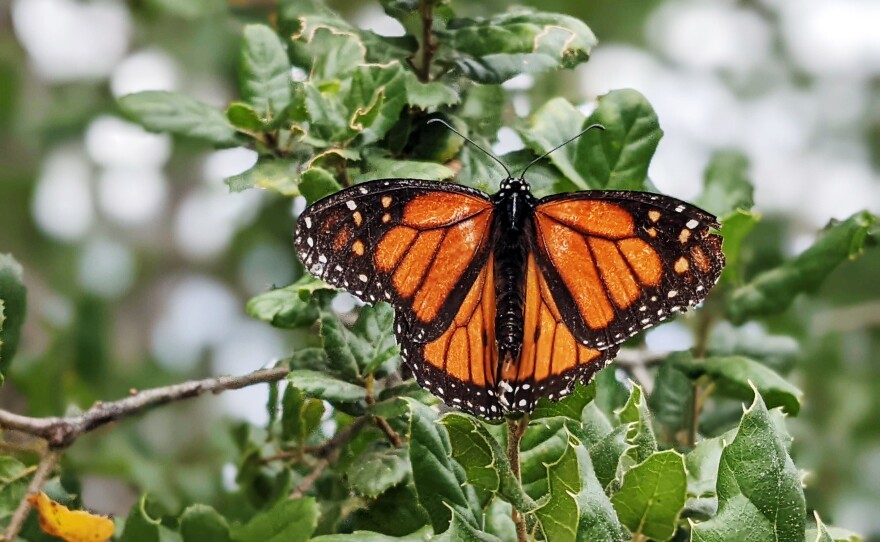During the pandemic last year, Xenia Mateiu was looking for a way to attract more foot traffic to her store, the Village Rock Shop in Carlsbad.
She decided to spruce up her shop's garden space. Chris Bany, her gardener, suggested she plant milkweeds to help with the monarch population.
It worked. Not only did the garden attract more customers, but it also attracted monarchs.
"He started us on this incredible journey of seeing what a butterfly lifecycle is really like, which I didn't know before," Mateiu said. "So it was a great learning experience for me and also something great to talk about to our customers."
RELATED: Monarch Butterfly Population Moves Closer To Extinction
Over the summer, she estimated there were around 300 monarchs hatched from her garden.
"Which was such an amazing experience for both us and our customers that were coming in," Mateiu said. "Because the chrysalis were inside of our shop. In the garden. It just bloomed."
Urban gardens such as hers are probably what's helping the monarch's numbers rebound in California after a record low last winter, said Pat Flanagan, who runs the Butterfly Farms in Encinitas.
“We think that a lot of these monarchs that we're finding in the overwintering spots are a direct result of people adding more milkweed in the urban gardens,” he said.
RELATED: Milkweed Planted In California To Help Monarch Butterflies

Last winter, there were fewer than 2,000 monarch butterflies recorded in California — a massive decline from the tens of thousands recorded in previous years and down from the millions reported in the 1980s.
So far this year, more than 50,000 monarchs have been counted in wintering sites in California, according to the Xerces Society for Invertebrate Conservation. The official count, however, won't be released until next month.
Flanagan said he's counted more than 300 in one spot in Encinitas. That's up from zero in the previous 10 years.
It’s numbers like those that inspired Encinitas resident Alan Russell to plant milkweeds, the only plant where female monarch butterflies will lay her eggs.
"When I read the news about the devastating losses of the monarch, like everyone, I think, what could I do?" he said. "So last year, I probably had 14 to 15 milkweed plants going and nurtured them."
There’s nothing like watching a monarch hatch and fly away, Russell said.
But Flanagan warns this year’s rebound is not cause for celebration yet. He said scientists don’t exactly know the cause of the monarch’s decline or why the numbers are climbing up this year.






